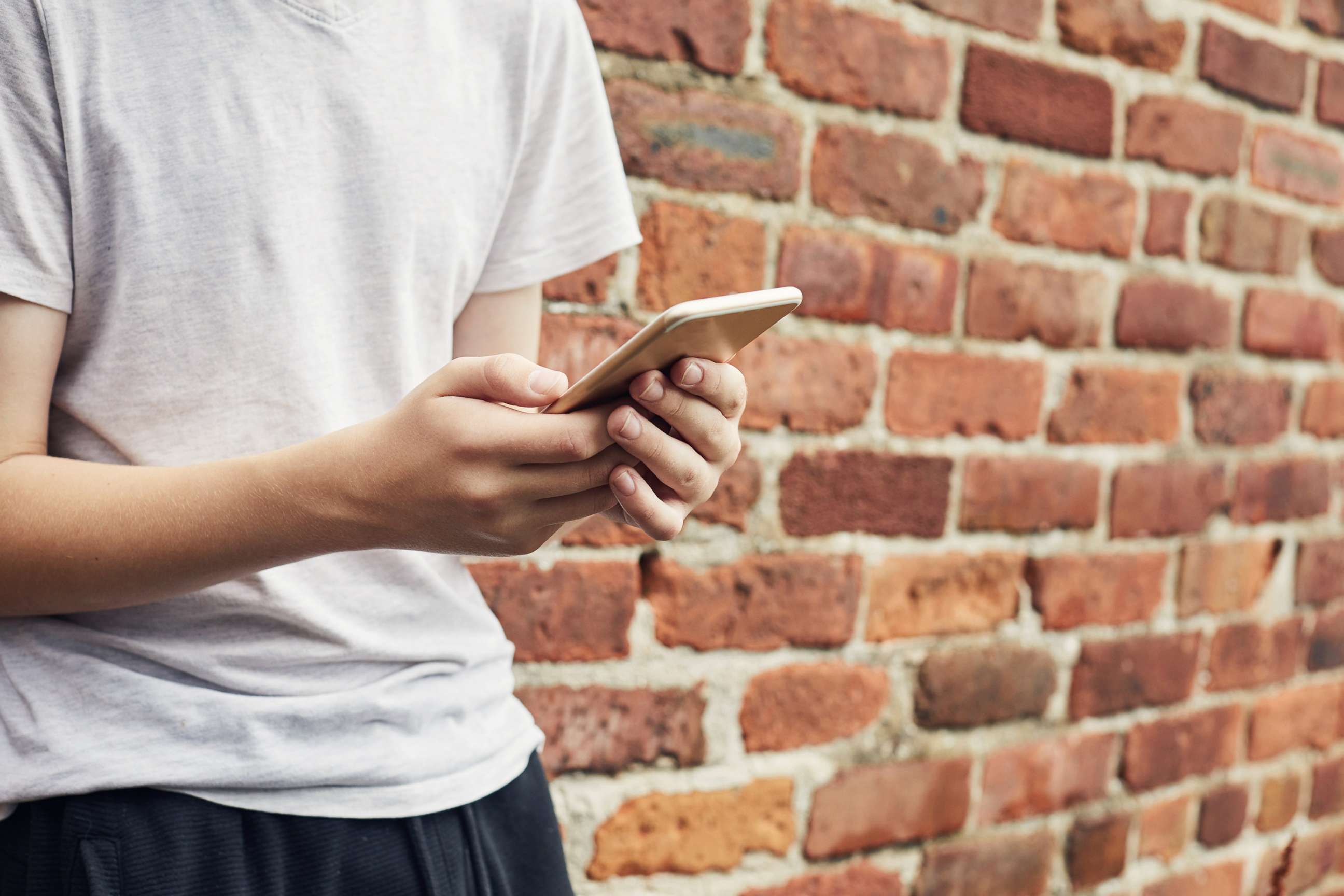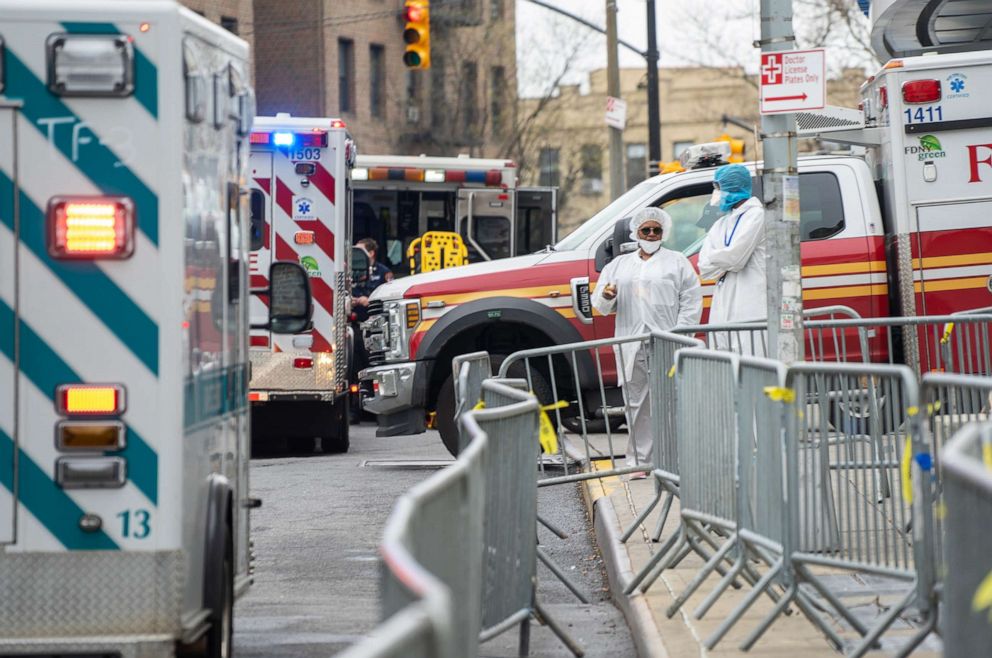Teletherapy meets teens where they live: On-screen
New apps help teens access mental health services during the pandemic.
Due to the coronavirus, many teens have been missing their proms, graduation ceremonies, daily routines and their friends. These missed events and social interactions are only adding to the additional stress many adolescents are facing amid the pandemic, health experts say.
"A lot of my clients have been more depressed, more anxious,” said Geovany Martinez, a bilingual social worker who treats at-risk clients in New York City and Yonkers, New York.
Some feel isolated and lonely even as they might be stuck in crowded apartments, perhaps with difficult or abusive family members. Previous coping practices like seeing friends and playing sports are risky, Martinez said.
And in a coronavirus hotspot that's also home to the nation's poorest congressional district—where many employed adults have to take public transit to essential jobs, while many who are no longer employed worry about paying for food—parents’ angst often filters down to their teenage children.
Martinez works with the Westchester Jewish Community Services, a family mental health clinic that partners with Montefiore Health Systems in the Bronx. For teens in the New York City borough, mental health needs are both urgent and often unmet.
They're not alone: A 2019 analysis by the Kaiser Family Foundation found that nearly 40 percent of Americans live in areas with critical shortages of mental health professionals, with poor and rural areas the least well served. And in April of this year, the foundation predicted that “negative mental health effects due to social isolation may be particularly pronounced” among adolescents, who are “already at risk for depression or suicidal ideation.”
Enter a potential game changer: the app.

“I hate to say anything’s great about the pandemic,” Michelle Blackmore, a clinical psychologist and project director at Montefiore’s Behavioral Health Integration Program, said. But “we’ve taken advantage of this time to really extend our use of telemedicine, video visits, and care-manager smartphone apps to help maintain connection with our patients beyond the walls of our offices.”
During the pandemic, "there were so many barriers to getting patients in the door,” said Blackmore. “You’ve got parents working multiple jobs, kids that have difficulty accessing transportation, parents being unable to find child care for the siblings,” as well as the stigma of mental illness.
FaceTiming with your therapist
Montefiore uses a patient-engagement app from Valera Health that combines video therapy with standard screening and monitoring tools, educational materials and the ability to handle logistical tasks like setting up appointments into one encrypted, HIPPA-compliant platform.
Patients are typically enrolled in Valera Health by their Montefiore behavioral specialists. Once enrolled, patients download the app and can use it to communicate directly with their therapist and case manager, bypassing both the automated phone trees and voicemail tag so common in health systems. In addition, therapists and psychiatrists are also able to use the platform to communicate with patients through chat or hold telehealth sessions.
The first Montefiore pilot launched in late 2016 for a cohort of 1,000 patients at three primary care sites. Montefiore and its community partners like WJCS have since expanded to projects at over 25 sites, which include programs for outpatient behavioral health, to over 4,000 patients. Astoundingly, but not surprising, during the quarantine, teletherapy for mental health patients video sessions increased 2,000% over five months.
Cho Weng, a Valera program manager, recalls an instance when a case manager did an assessment by phone and the patient indicated nothing amiss. Later that day, though, the patient answered the same questions on the app, and that score indicated moderately severe depression.
"The caseworker reached back out to the patient, and it turns out that he was uncomfortable actually answering this over the phone," Weng said.
His multiple-choice answers on the app more accurately reflected his mental state.
“Adolescents are used to communicating through video calls, FaceTime, text messaging,” Blackmore said. “They're much more comfortable communicating with us through the way that they typically communicate with their friends, family members.” When a therapist reaches out to them, she explains, “it looks like a FaceTime call. They just hit ‘accept.’”

Blackmore finds the app’s screening tools particularly helpful. Patients receive daily, weekly and monthly multiple-choice questionnaires designed to flag problems. They fill out the questionnaires at a convenient time and place, and therapists review the responses and consider what intervention, if any, is called for.
Angela Chen, a pediatric psychologist at Montefiore until mid-May, said the coronavirus quarantine had forced her to treat almost all of her mental health patients, many of them in their teens, by phone.
'Sign me up'
“Quite a few of my adolescent patients had been asking me when we can start moving onto video,” she said, “and when I mentioned that we were rolling this out, they were very enthusiastic and they said, ‘Okay, sign me up.’”
The app also allows the therapist or caseworker to view the patient’s responses over time, detecting trends in mood or behavior. One byproduct of this feature, Blackmore has found, is that “patients themselves are now much more mindful about how they're doing.”
It gives them a sense of agency and it makes the right thing to do the easy thing to do, she said.
Dr. Brian Hurley, Director of Addiction Medicine for Los Angeles County, said that he's "glad to have" teletherapy as "an option for my own patients," while acknowledging that in-person examinations are preferable. But during the pandemic, "the genuine drawbacks in behavioral health care delivered via telehealth are more than compensated for by the increased access permitted through these platforms."
Recent studies have documented that virtual mental health can be effective. Researchers from around the world, including UCLA, found that online cognitive behavioral therapy is "effective, acceptable and practical health care." The study found it was effective for major depression, panic disorder, social anxiety disorder and generalized anxiety disorder.
But not everyone is a fan of this techno-therapy.
Video-chat therapy, detractors say, obscures facial cues and body language, curtails empathy, inhibits trust, and generally interferes with human perception. Therapists and patients alike report that it’s confoundingly exhausting. And the experiences aren't created equal.
"There are a few populations in which it may be preferable to having in-person care (e.g., autism spectrum, severe anxiety disorders, geriatric patients with physical limitations, those with significant geographical obstacles)," Dr. Arpan Waghray, System Medical Director for telepsychiatry of Providence Health, told ABC News.
In the real world, the number of mental health professionals doesn’t begin to meet the need, would-be patients often wait months for treatment, and many others don’t receive treatment at all. “Unfortunately, access to mental health care, has always been a problem and is a privilege for some and not a right for many,” said Dr. Henry Chung, Professor of Psychiatry at Albert Einstein College of Medicine.
For Martinez, the relationship between his patients and him is like Batman and Robin. "For every superhero you have a sidekick that provides additional support, strength, and wisdom to any challenge. The ability to collaborate and listen to each other is unbreakable. I think teletherapy/digital solutions symbolizes that connection."
Under these circumstances, even purists might concede that video therapy is not the enemy.
Dr. Jay Bhatt is a practicing internist, an Aspen Health Innovators Fellow and an ABC News contributor.



